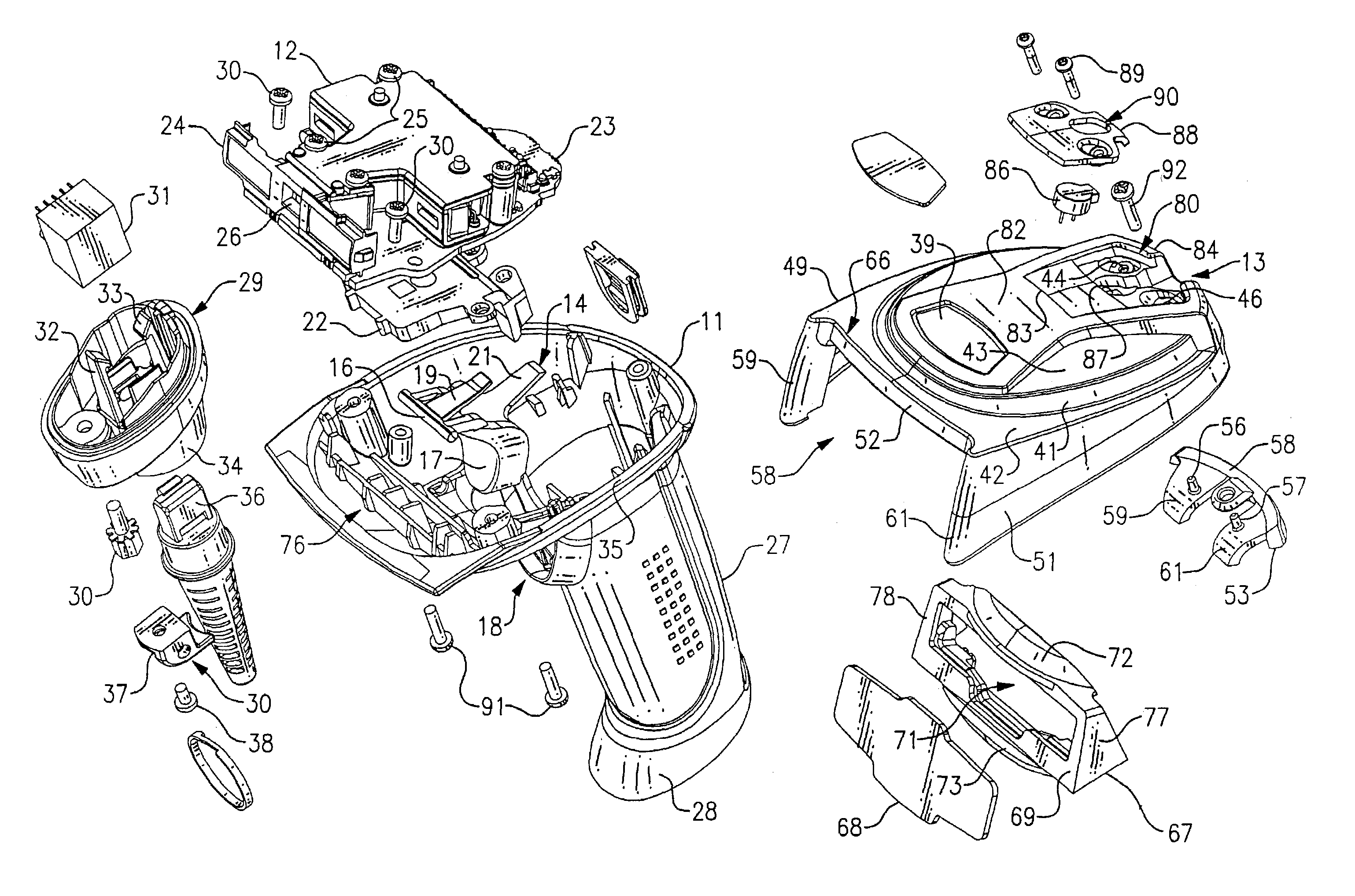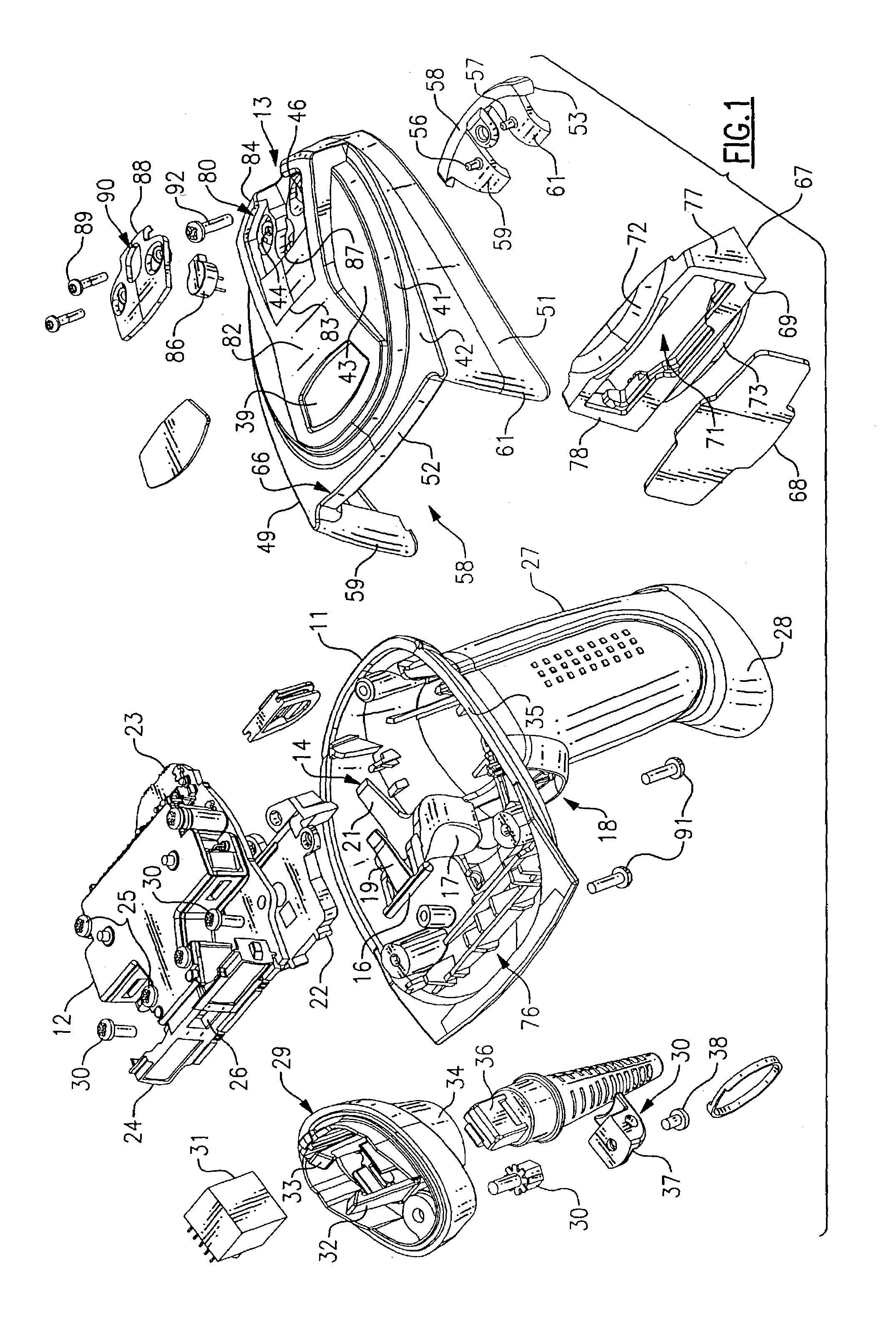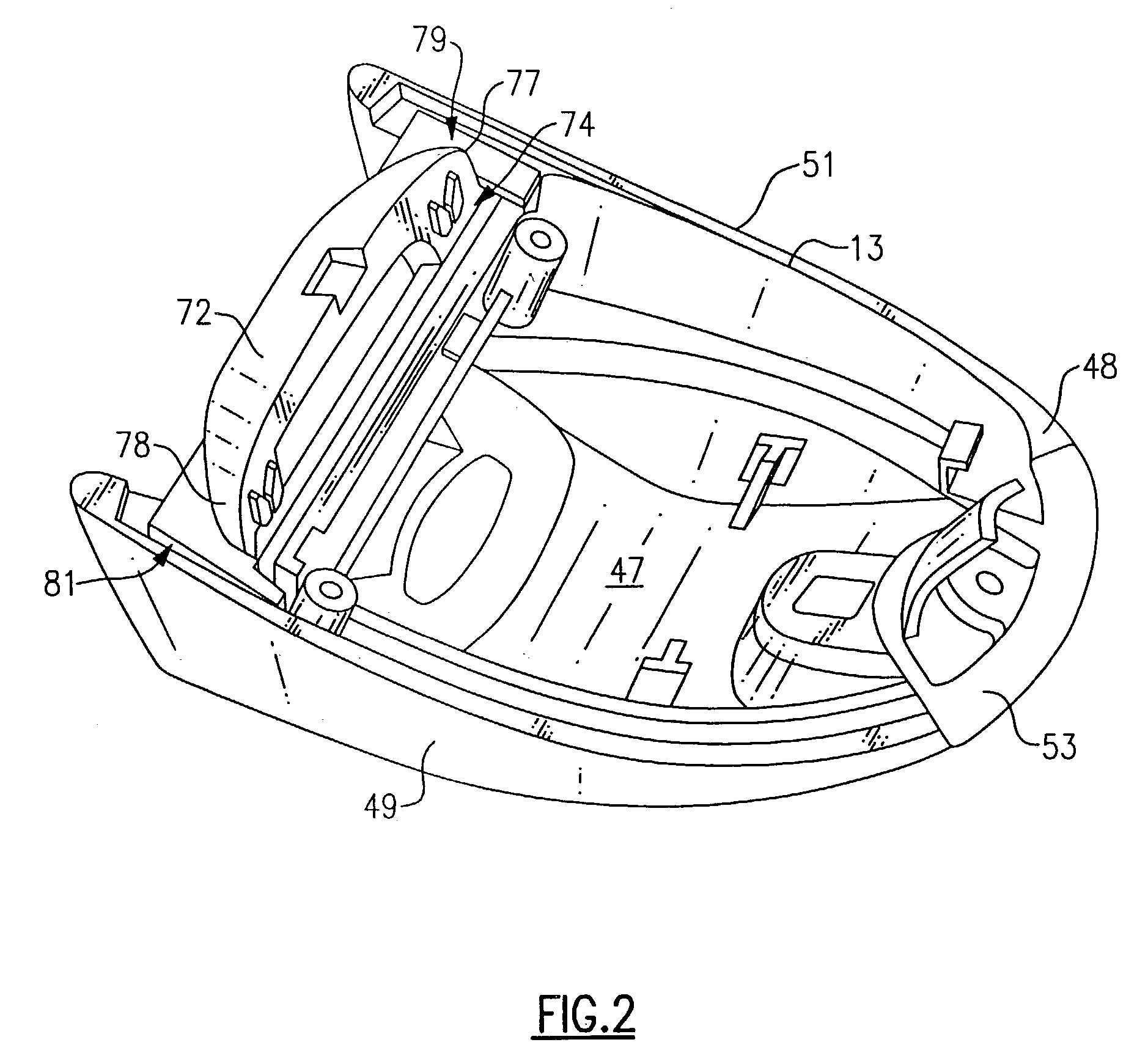Housing for an optical reader
- Summary
- Abstract
- Description
- Claims
- Application Information
AI Technical Summary
Benefits of technology
Problems solved by technology
Method used
Image
Examples
Embodiment Construction
[0029]FIG. 1, shows the various components of the optical reader device, including a handle assembly 11, an optics assembly 12 and a housing cover 13.
[0030]Contained within an internal cavity 14 of the handle assembly 11, is a trigger assembly 16 with it's trigger 17 loosely extending through a trigger opening 18 such that the trigger 17 can be selectively depressed by the operator. On the upper side of the trigger assembly 16 is a pair of contact members 19 and 21 which, when the trigger is depressed, engage surfaces on the trigger frame 22 mounted thereabove. Disposed immediately above and attached to the trigger frame 22 is a printed circuit board 23 to which the optical assembly 12 is mounted.
[0031]The optical assembly 12 has mounted therein a plurality of light emitting diodes which project light forwardly through a lens assembly 24 for the illumination of a target such as a bar code. An optics assembly within the lens assembly 24 then projects an image back through an opening ...
PUM
 Login to View More
Login to View More Abstract
Description
Claims
Application Information
 Login to View More
Login to View More - R&D
- Intellectual Property
- Life Sciences
- Materials
- Tech Scout
- Unparalleled Data Quality
- Higher Quality Content
- 60% Fewer Hallucinations
Browse by: Latest US Patents, China's latest patents, Technical Efficacy Thesaurus, Application Domain, Technology Topic, Popular Technical Reports.
© 2025 PatSnap. All rights reserved.Legal|Privacy policy|Modern Slavery Act Transparency Statement|Sitemap|About US| Contact US: help@patsnap.com



